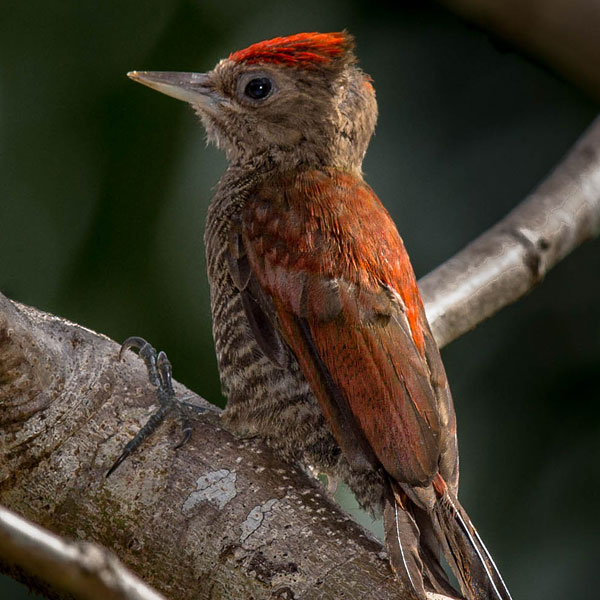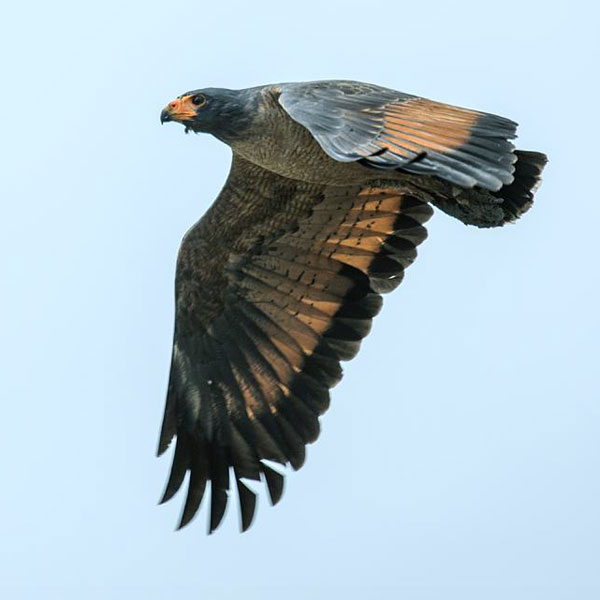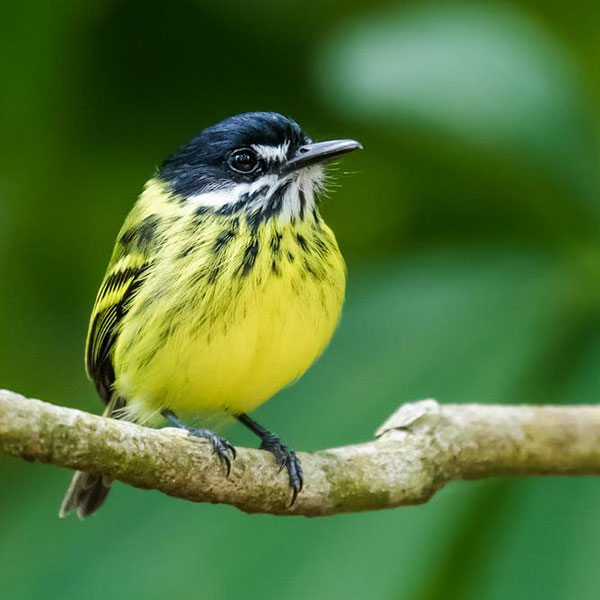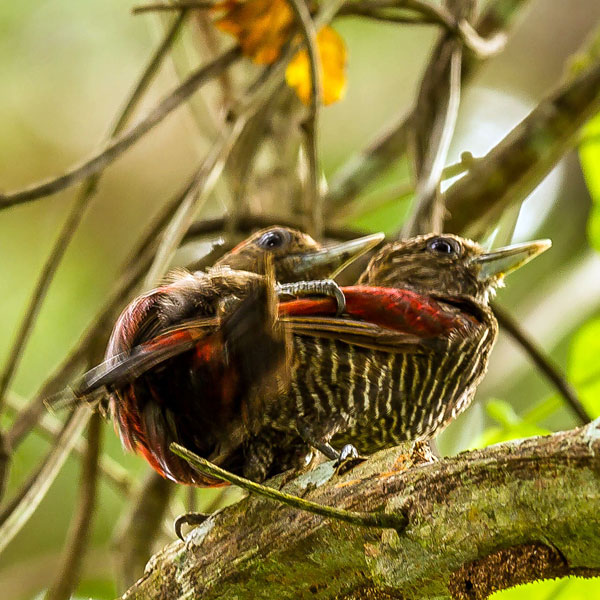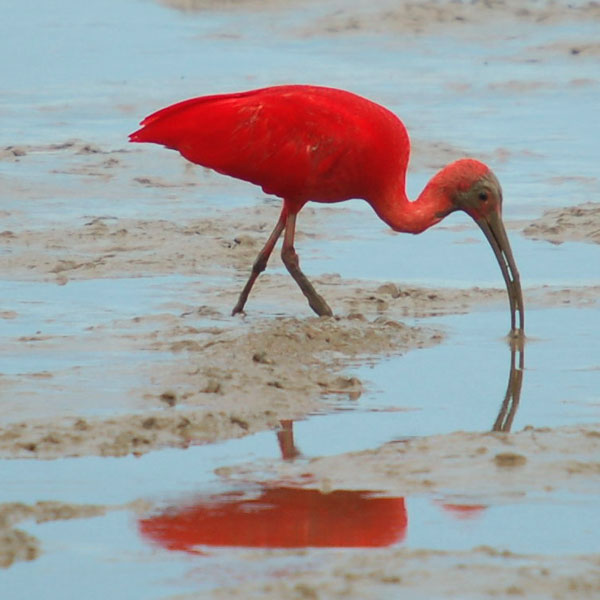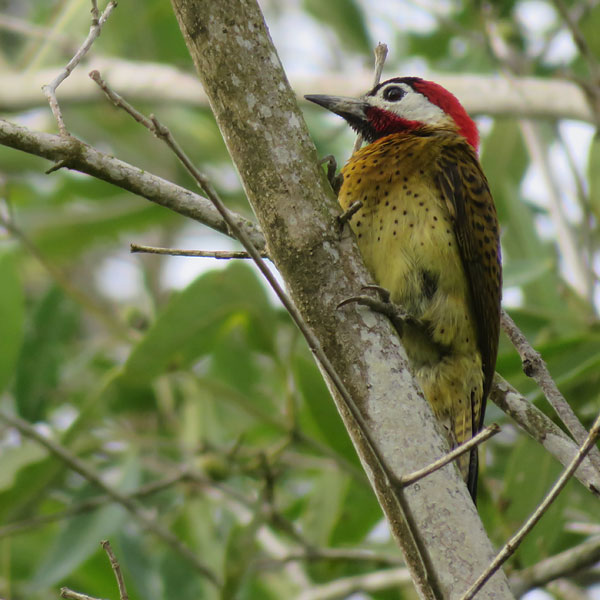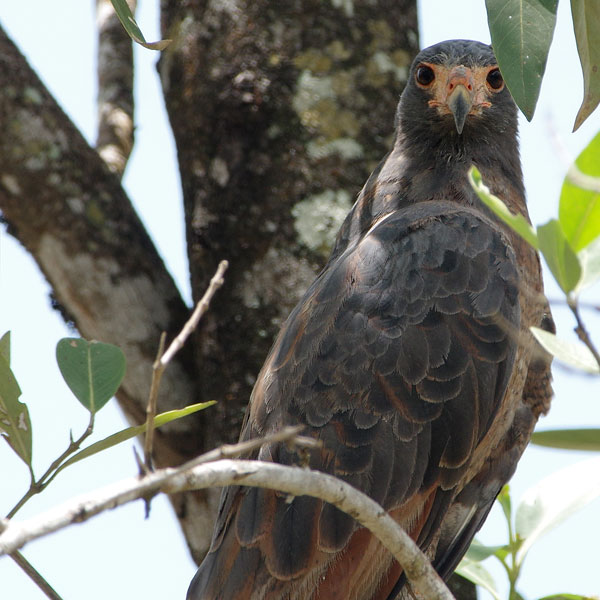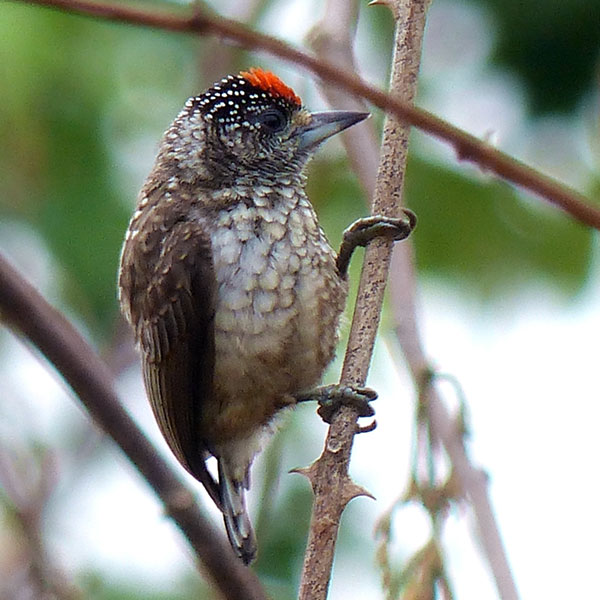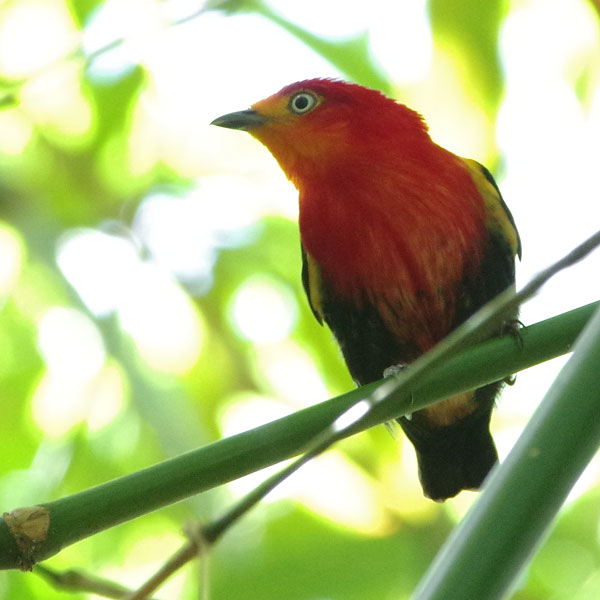BIRDWATCHING IN THE SURRONDINGS OF PARAMARIBO
More than 400 species of birds have been spotted in the surroundings of Paramaribo. The website of Jan Hein Ribot has a the total species list. Hot spots are Warapa Creek, Weg naar Zee, Peperpot and the Cultuurtuin.
WARAPA CREEK
Recently the Warapa Creek has been opened for tourists. The creek can be divided into three distinctive landscapes. First we enter a dark mangrove forest. Then we come into an open grass swamp with some mangroves. Here the canal starts, which connects the creek with the ocean. The last part begins with a dead mangrove forest, a natural habitat, with naked hard mud separated form the ocean by a low beach wall which is overgrown with low trees. From the beach wall we have a marvelous view on the vast mudflats.
The important target species the Rufous Crab Hawk is extremely common in the whole area. The dead mangroves attract a lot of woodpeckers. Nine species have been spotted. Red-crowned and Spot-breasted Woodpecker can be lured easily. The near-endemic Blood-coloured Woodpecker and the endemic Arrowhead Piculet are also common, but not always easy to spot. The Pygmy Kingfisher can be seen at close range, when sitting on the large arch-shaped stilt roots of the Red Mangroves in the first part of the creek. There, the Ashy-headed Greenlet is easy to find. Spectacular birds such as Scarlet Ibis, Roseate Spoonbill and Wood Stork can be seen in the last part near the ocean. On the mudflat in front of young Black Mangroves we can see the ibises, egrets, night-herons and the migrating North American shorebirds.
The creek can be reached within two hours from Paramaribo by car and boat.
The important target species the Rufous Crab Hawk is extremely common in the whole area. The dead mangroves attract a lot of woodpeckers. Nine species have been spotted. Red-crowned and Spot-breasted Woodpecker can be lured easily. The near-endemic Blood-coloured Woodpecker and the endemic Arrowhead Piculet are also common, but not always easy to spot. The Pygmy Kingfisher can be seen at close range, when sitting on the large arch-shaped stilt roots of the Red Mangroves in the first part of the creek. There, the Ashy-headed Greenlet is easy to find. Spectacular birds such as Scarlet Ibis, Roseate Spoonbill and Wood Stork can be seen in the last part near the ocean. On the mudflat in front of young Black Mangroves we can see the ibises, egrets, night-herons and the migrating North American shorebirds.
The creek can be reached within two hours from Paramaribo by car and boat.
WEG NAAR ZEE
Weg naar Zee means road to the sea. It is a road about 5 km long through swampy meadows, with a lot of Snail Kites. Sometimes we see a Long-winged Harrier or a Limpkin. Red-breasted Meadowlarks, with their incredibly red breasts, are common. Toco Toucan has been seen here. At the end, there are two places where we can reach the Atlantic Ocean: one is a Hindustani Temple and the other a crematorium.
Here we can see thousands of North American shorebirds at the right season. Outside their breeding season, from September till April, Scarlet Ibises forage on the mudflats at low tide. Three egret species are common. This is probably the second-best place in the world to spot a Rufous Crab-Hawk. So far we have never missed it. In the mangroves along the coast, we have a good chance to find the Bicolored Conebill.
In a swamp forest not far from ‘Weg naar Zee’, named ‘Chocopot’ after the Cocoa Thrush, we have a very good chance to see the Crimson-hooded Manakin. You better use insect repellent here, because mosquitoes have an even better chance to find us.
PEPERPOT
Peperpot is an abandoned coffee plantation. It’s full of coffee bushes overgrown with climbing plants with a canopy of coffee-mother trees, protecting the coffee from the sun. The coffee berries are eaten by many birds. One of our guests named it ‘the 100 yards birdwatching’ after two hours of bird watching and only 100 yards walking.
This is a good spot to see the Ashy-headed Greenlet, Blood-colored Woodpecker, Arrowhead Piculet, Painted Tody Flycatcher, Straight-billed and Striped Woodcreeper. Green Ibis and Slender-billed Kite may fly over our heads, while we listen to the song of the Cinnamon Attila, Blackish, Silvered and Black-throated Antbird. The spectacular Spotted Puffbird occurs here, but is difficult to lure. A couple of Black-capped Donacobius can be seen swinging with their tails in the tall grass near the entrance of the park. Green-tailed Jacamars are common and the mysterious Great Potoo has been seen often.
CULTUURTUIN
Cultuurtuin means Culture Garden. It is a large complex of agriculturally oriented institutes, the Zoo and a Botanical Garden. In the latter we will easily find more than 50 species of common garden birds in less than two hours. Although it does not look like a botanical garden, it was intended to be a copy of Bogor, the botanical garden of Djakarta, Indonesia. Hence we find here a mixture of Indonesian and indigenous trees. Least Grebes have been sighted in the pond and we have a fairly good chance to see Green-tailed Jacamar and Blood-colored Woodpecker. The best attraction is a lek of Crimson-hooded Manakins.
[photos ©] Scarlet Ibis by Carla Out / Arrowhead Piculet by Ton Plug / (2 x) Blood-colored Woodpecker by Jean-Louis Rouselle / Spot-breasted Woodpecker by Rafael Marquez / Painted Tody-Flycatcher and flying Rufous Crab Hawk by Nick Athanas / Crimson-hooded Manakin and sitting Rufous Crab Hawk by Nobuhisa Takano
Paramaribo, Suriname
